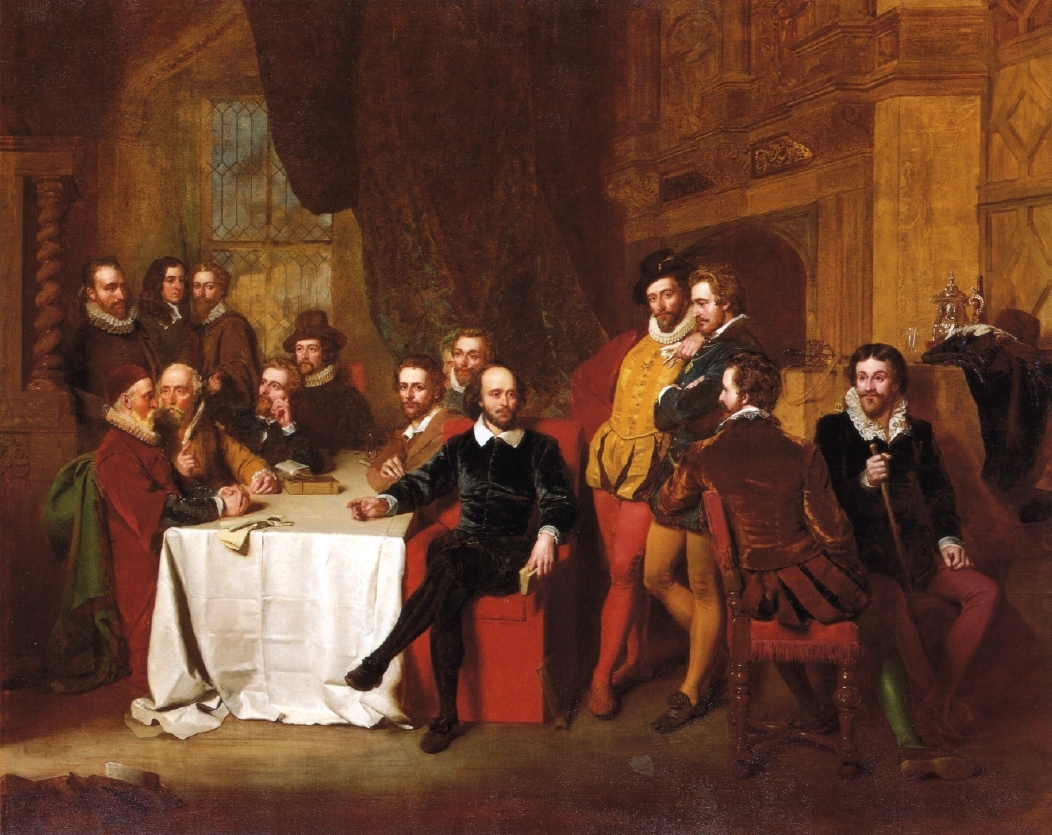This year marks 400 years since the publication of the first volume of poet and playwright Ben Jonson’s collected texts, the first complete English translation of Homer’s Iliad and Odyssey, by poet and translator George Chapman, and the Political Works of King James I, arriving a few years after the King James Bible. Little would contemporaries have guessed that 400 years later these momentous works would be eclipsed by a death in Warwickshire – one William Shakespeare.
It seems now that every Shakespeare anniversary must be marked by a tide of special performances, exhibitions, biographies (even including this year one promised from Boris Johnson) and the usual mugs, T-shirts, commemorative coins, cakes – and the London Book Fair offering “the Shakesperience”. Each day, announcements of new anthologies of Shakespeare criticism or “essential” reference volumes flop into the inbox like exhausted seals in search of a suitable rock. We’re in danger of being “bard to death” by it all.
Let’s not quibble: Shakespeare’s work is fabulous. The plays fill us with curiosity and excitement. They force us to think and rethink every time we encounter them on the page, on the stage, in the cinema, or stumble again upon some previously unregarded corner of the canon. Each time it feels like we have grown new ears. But the tsunami of studies, rehashing of critical material, and general commercialisation of “Brand Shakespeare” is exhausting. Do we really need a Shakespeare themed flowerpot to coincide with the 400th anniversary of his death?
We have seen how Stratford-upon-Avon has become a newly-Disnified site of literary pilgrimage, but while this endless Shakespearification (perhaps Shakespeari-fiction?) intends to commemorate a man’s great work, it drowns out much of the complexity of reconstructing earlier lives. Indeed, the sun of Avon threatens to blot out all the other voices, lives, and achievements – not only of 1616, but also the incredible richness of the entire late 16th and early 17th centuries’ creative culture.
Also appearing in 1616
1616 was the year in which logarithms, the foundation of much of mathematics, were first translated from Scots Latin into English. It was the year in which William Harvey gave the first lectures tracing how the heart pumped blood around the body.
The sexual scandal revealed by the trial of the Earl and Countess of Somersetlink for murder and adultery has given us insights about how news spread, how the personal and political intermingled, how women – even those of the elite – could be treated during that era, and perhaps even marked the start of the de-legitimisation of the Stuart monarchy.
In 1616 Pocahontas was in England, while, from the court of Jahangir in India, Sir Thomas Roe wrote to the Countess of Huntingdon on linen paper, the start of the rise of the East India Company. Yet all this variety – and so much more – gets ridden over in the Shakespearean stampede.
Putting English literature on the map
Benjamin Jonson is as important a literary heavyweight as Shakespeare. Abraham van Blyenberch/National Portrait Gallery
The paradox of celebrating the death of a man whose works fascinate us points towards the other great event of 1616, the publication of The Works of Benjamin Jonson. Scholars argue as to whether this truly is the first publication of vernacular English works in the collected form used by classical texts of authority and significance. But by locating English culture in relation to European literature and the Greek and Roman classics, The Works represents the entrance of a new sense of English identity, and of the potential of English as a language.
Jonson’s Works may not have launched the age of the book but it marks the arrival of English literary print culture. Filled with complex margin notes and allusive texts, the publication of The Works also marks the coming of age of critical reading – and the sense of reading and writing as valuable in themselves because they can reshape the ways we understand the world. Jonson’s Works can be seen as the foundation text of English literature as a discipline.
Without Jonson’s 1616 text, Shakespeare’s posthumous 1623 folio is unthinkable, but also unreadable: Jonson gives us the ways to read what were formerly seen as “unconsidered trifles” as serious literature. Homer, the King James Bible, and Jonson are mentioned here from among many others because they combine the classical poetic heritage, the prose (and especially Biblical prose) tradition, and the dramatic world of London theatre, and it is these three that continue to shape so much of our literature – our world literature – today.
Of course, this group is as much a constructed product of critical and intellectual selectivity as the Shakespeare so celebrated at the moment. In 1616 these were not the most radical voices, nor were they the most silenced ones by any means. But, through the rich culture they evoke, they illustrate what can be lost by taking Shakespeare out of all context, as we seem to be doing in 2016.
 James Knowles does not work for, consult, own shares in or receive funding from any company or organization that would benefit from this article, and has disclosed no relevant affiliations beyond the academic appointment above.
James Knowles does not work for, consult, own shares in or receive funding from any company or organization that would benefit from this article, and has disclosed no relevant affiliations beyond the academic appointment above.
James Knowles, Vice-Dean of Research and Professor of Renaissance Literature and Culture
This article was originally published on The Conversation. Read the original article.




 U.S. Black Friday Online Spending Surges to $8.6 Billion, Boosted by Mobile Shoppers
U.S. Black Friday Online Spending Surges to $8.6 Billion, Boosted by Mobile Shoppers  Bitcoin Defies Gravity Above $93K Despite Missing Retail FOMO – ETF Inflows Return & Whales Accumulate: Buy the Dip to $100K
Bitcoin Defies Gravity Above $93K Despite Missing Retail FOMO – ETF Inflows Return & Whales Accumulate: Buy the Dip to $100K  India’s IT Sector Faces Sharp 2025 Valuation Reset as Mid-Caps Outshine Large Players
India’s IT Sector Faces Sharp 2025 Valuation Reset as Mid-Caps Outshine Large Players  Bitcoin Smashes $93K as Institutions Pile In – $100K Next?
Bitcoin Smashes $93K as Institutions Pile In – $100K Next?  Gold’s Best Friend Is Back: Falling Yields Reload the $4,300 Bull Case
Gold’s Best Friend Is Back: Falling Yields Reload the $4,300 Bull Case  China Vanke Hit with Fresh S&P Downgrade as Debt Concerns Intensify
China Vanke Hit with Fresh S&P Downgrade as Debt Concerns Intensify 





























